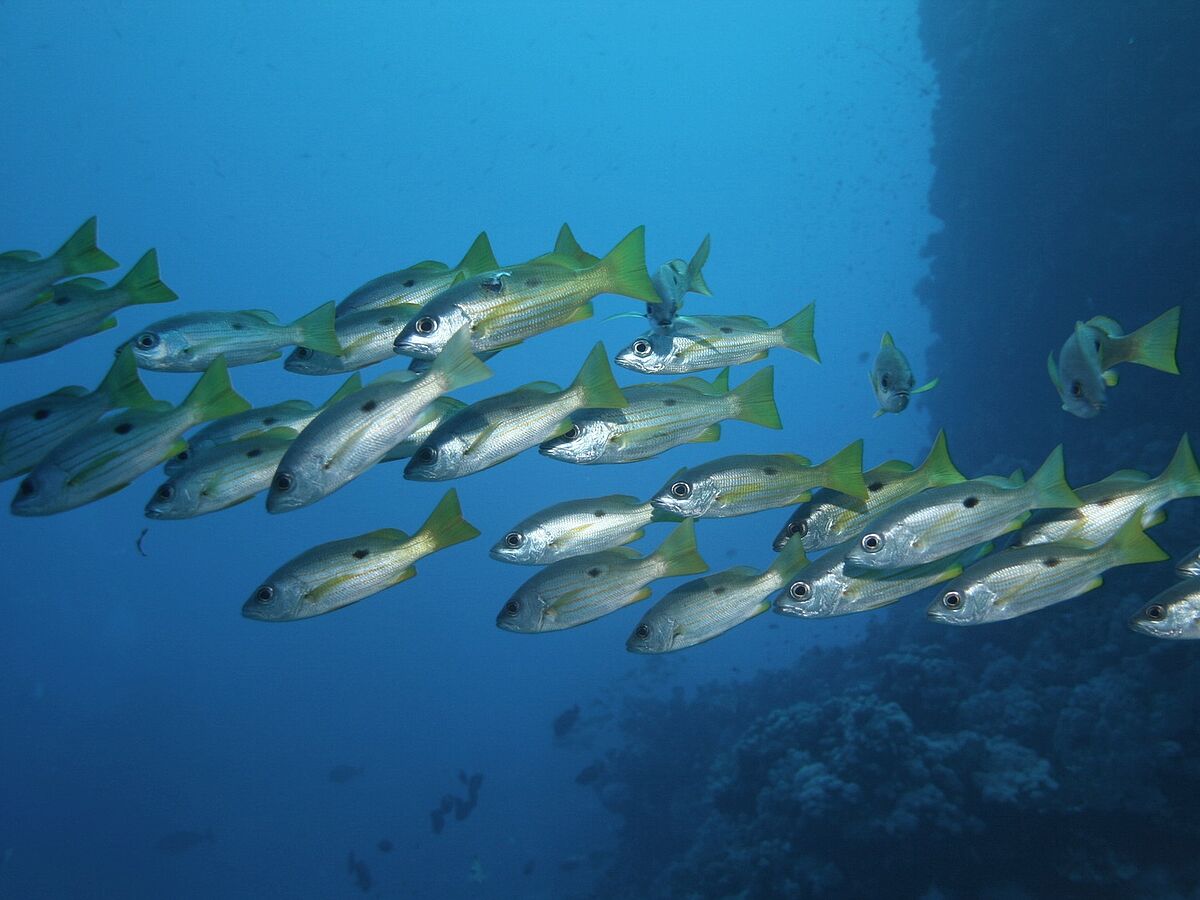With the help of high resolution slow-motion
cameras scientists discovered how fishes coordinate their movements while
swimming in a shoal. They estimate the distance to neighbouring individuals and
come closer or back off intuitively. Mosquitofish only need to observe one
nearest neighbour.
It’s
estimated that about 60 percent of all fish species form groups of individuals
at some point in their lives. This behaviour is advantageous in many respects,
for example they find food more easily or defend more efficiently when attacked
by predators. That movements appear synchronised in a school of fish is not
self-evident, says Ashley Ward (Leibniz-Institute for Freshwater Ecology and
Inland Fisheries, IGB). Together with colleagues from Sweden and Australia,
Ward analysed the movements of mosquitofish (Gambusia holbrooki) and identified
interaction rules that determine how they respond to their neighbour’s
movements and positions. “We found out that the individuals have three kinds of
zones that they respond to. First there is the zone of repulsion, where a fish
backs away when it comes closer to another fish. Second there is the zone of
alignment, where they have the ideal distance to other individuals. And third
there is the zone of attraction, where the individual is inclined to reach the
zone of alignment and comes closer.”
Ward and
his colleagues formulated three basic rules: Attraction is important in
maintaining the group cohesion and works like a virtual rubber band that keeps
the shoal from breaking up. Repulsion is an individual impulse and is mediated
principally by changes in speed. As the third rule the scientists observed,
that mosquitofish only respond to their single nearest neighbour, although the
directions and positions of all shoal members are highly correlated. This
behaviour is different from pigeons for example. It has been proved that pigeons
are able to respond to up to seven other individuals at the same time.
When a
shoal is moving, there is a lead individual, while all other shoal members try
so swim in the zone of alignment. To locate other individuals, fishes mostly
use visual contact and mechanical reception through their lateral lines. ”Each
fish is only to react with a delay, when a neighbour changes speed or
direction”, explains Ward. “Movement impulses are therefore transmitted in the
form of a longitudinal wave, there are always fish that come too close or loose
contact to the group.” These waves are almost invisible for the human eye; the
scientists were only able to verify them with the help of high resolution
slow-motion cameras. “The courses of action are basically the same as in heavy
traffic. Drivers pay attention to the safety distance and need to slow down or
speed up in order to keep it.”
This basic
concept was hard to identify for the researchers. Only recently have computers
programmes been capable of tracking multiple similarly looking agents over time
in a video. The movement analysis was still tricky, Ward reports. Although
tracking methods work excellent nowadays, the software cannot replace common
sense. When two fish were crossing over in the viewing axis of the camera, the
software could not figure out which was which. Every time this happened, the
movements had to be assisted manually. Evaluating the videos of the small tank
with 2 to 16 mosquitofish took about eight months. The scientists assume that
the identified rules can be applied not only to other fish species, but to other
group-living vertebrates and mammals as well.
Originally
published in PNAS on November 15, 2011, doi: 10.1073/pnas.1109355108


